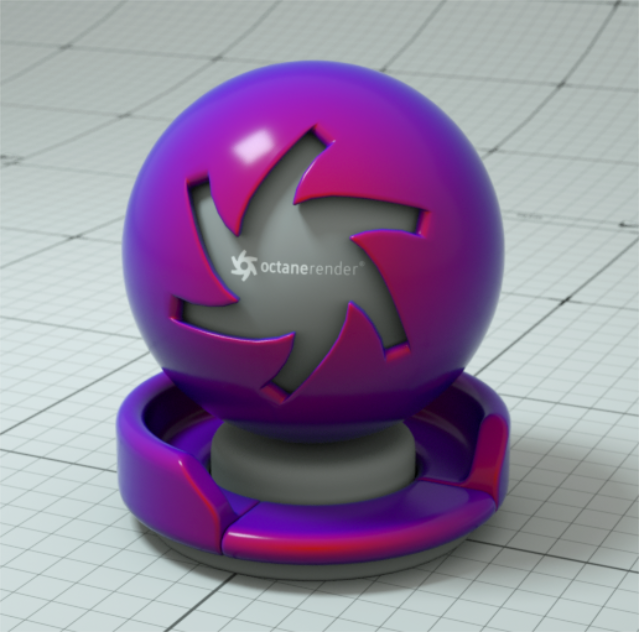
The Falloff Map texture controls material blending, depending on the viewing angle of the material's geometry.


The angle between the Eye Ray and the Shading Normal is mapped from [0°, 90°] to [0, 1]. For values larger than 1, the Falloff node does a gamma correction using the Falloff Skew Factor as an exponent. OctaneRender® uses the Skew Factor to interpolate between the spectral shades resulting from the Minimum Value and Maximum Value parameters, which are based on the first and second inputs of a Mix node.
You can use the Falloff Map to control the blending amount of a Mix node. The Mix node can either be Mix Texture or Mix MaterialThe representation of the surface or volume properties of an object..
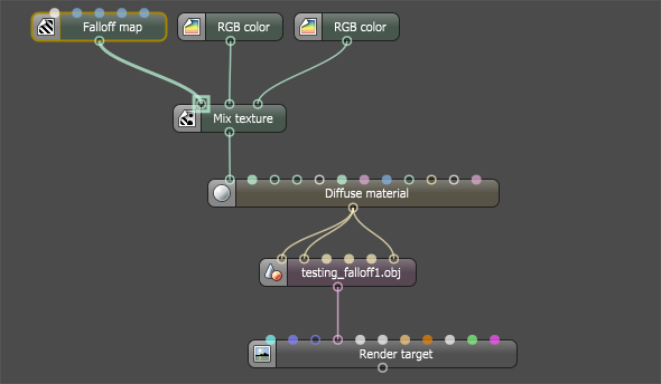

When using the Falloff Map, the Falloff node controls the Amount parameter of the Mix node.
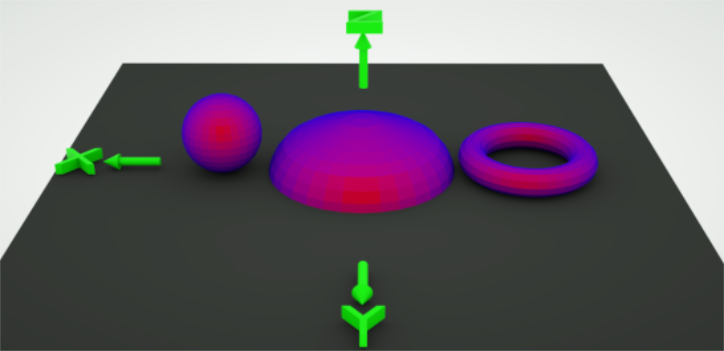 (Skew factor = 1; Direction does not apply)
(Skew factor = 1; Direction does not apply) (Skew factor = 1; Direction x=1)
(Skew factor = 1; Direction x=1)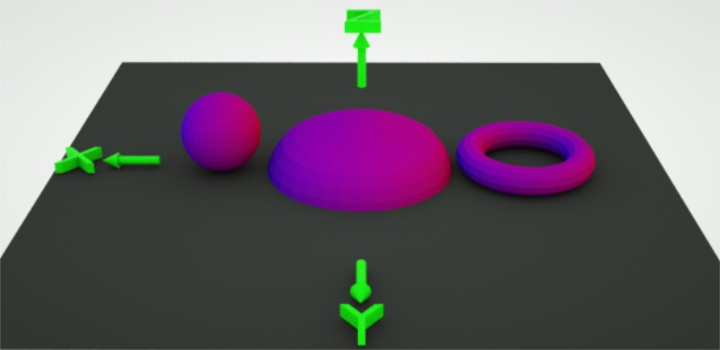 (Skew factor = 1; Direction x=1)
(Skew factor = 1; Direction x=1)

In the figure below, a red Diffuse materialUsed for dull, non-reflecting materials or mesh emitters. connects to the Mix materialUsed to mix any two material types.'s first Material pin, and a white DiffuseAmount of diffusion, or the reflection of light photons at different angles from an uneven or granular surface. Used for dull, non-reflecting materials or mesh emitters. material connects to the second Material pin. The Falloff map then connects to the Mix material's Amount pin.
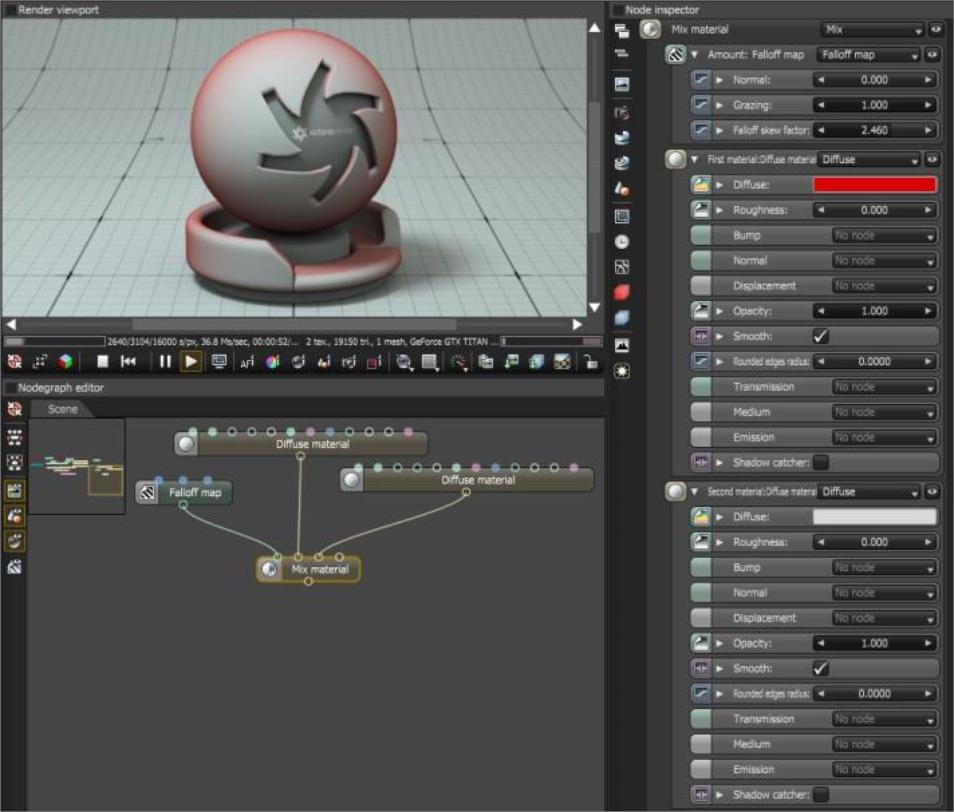
A Falloff texture controlling the Mix amount of a Mix material blending two Diffuse materials
A value of 0.1 leads to almost complete coverage by the grazing value regardless of viewing angle, whereas a value of 15 leads to almost complete coverage by the Normal value. This parameter's default setting is 6.
While the index value on GlossyThe measure of how well light is reflected from a surface in the specular direction, the amount and way in which the light is spread around the specular direction, and the change in specular reflection as the specular angle changes. Used for shiny materials such as plastics or metals. and SpecularAmount of specular reflection, or the mirror-like reflection of light photons at the same angle. Used for transparent materials such as glass and water. nodes corresponds to a real world Index of Refraction (IOR) value on dielectric materials like plastic and glass (OctaneRender doesn't yet support metals and Bezier curves), the Falloff node works differently because of this Falloff Skew Factor.
If set to 1, then the value is proportional to the angle between the Normal and the Camera Ray (i.e. if view angle is 45°, then the value is 0.5).
If the value is larger than 1, then it applies a power curve to the angle.
If the value is smaller than 1, then it inverts the skew factor, and mirrors the power curve.
falloff ≥ 1 : y = 1 – (1 – x) (1 / falloff )
Falloff Direction
This is used by the Normal vs. Vector 90deg and Normal vs. Vector 180deg modes. For most materials, the Fresnel effect (the default mode) is often correct, while Falloff Direction applies for exceptional cases, which can adjust relative to the camera. Changing the object rotation will not change the Falloff Direction orientation.
You can approximate the behavior of glass with a Skew Factor of 8.0 and a Normal value of 0.034.

You can also use the Falloff Map for other things, like the input for glass opacity. Falloff is useful for car shaders (at 90 degrees, it should have the desired color and in less somewhat darker, but at the same time a bit more reflective), water shaders (tends to be more reflective to low angles of incidence), and fabrics like velvet (tends to become almost white at low angles). It is also useful for some metals to simulate some coating effects.
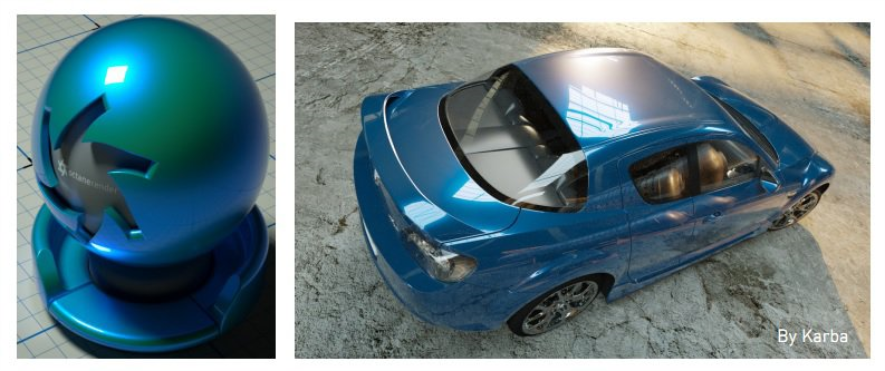
 <-Image without Falloff
<-Image without Falloff
 <-Image with Falloff
<-Image with Falloff

